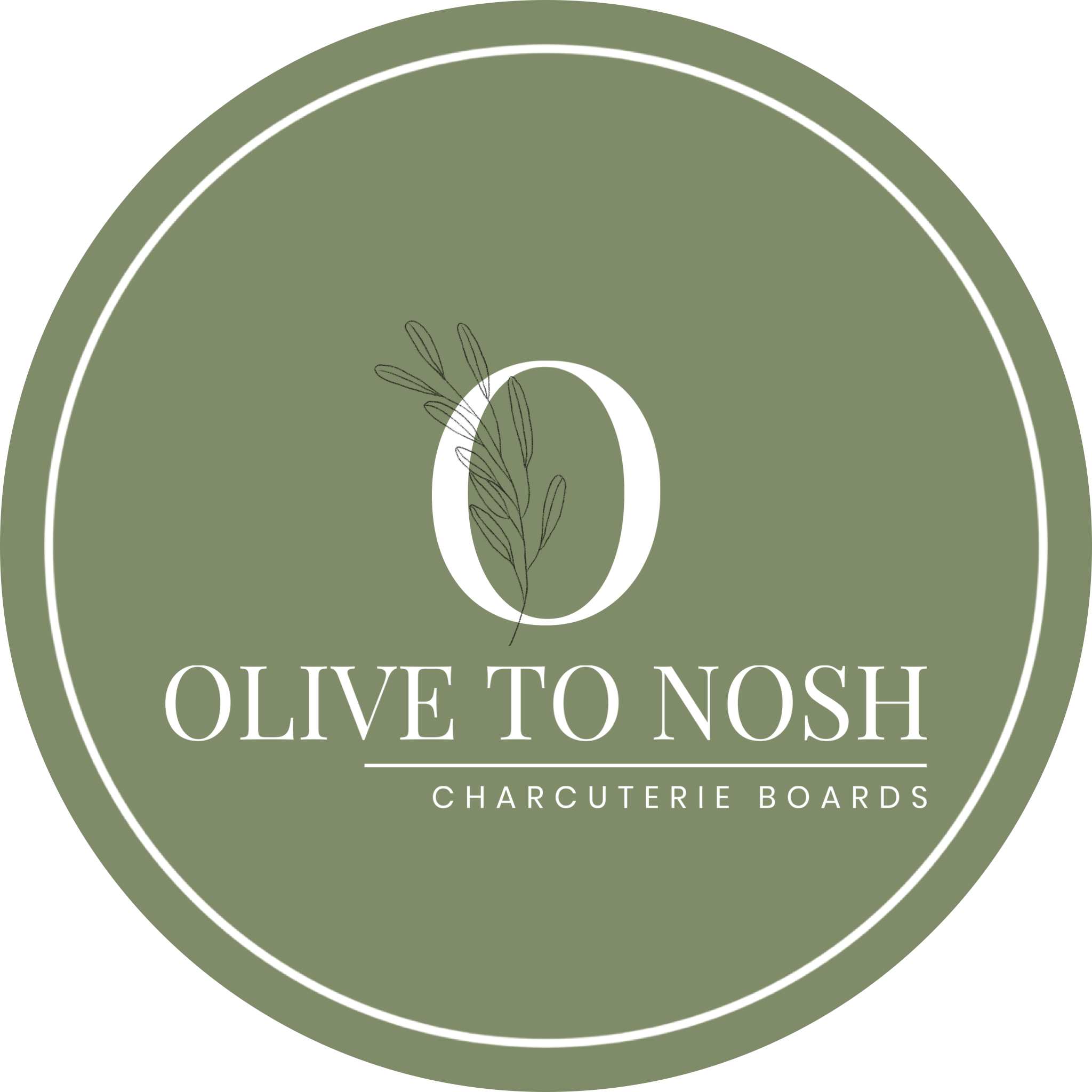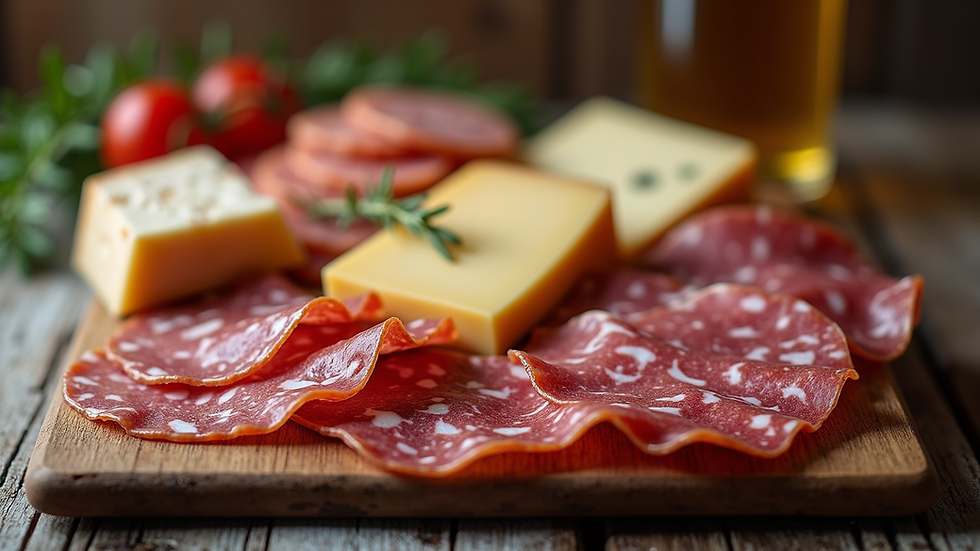How to Pair Meats and Cheeses Like a Pro
- Mary Siders
- Apr 21
- 4 min read
Creating the perfect combination of meats and cheeses can elevate any meal or gathering. Whether you're planning a cozy dinner for two or an extravagant party, mastering the art of pairing meats and cheeses is essential. With the right knowledge, you can impress your guests and enhance their tasting experience. Let’s dive into the secrets of creating successful pairings that will leave everyone wanting more.
Understanding the Basics of Pairing Meats
When it comes to pairing meats with cheeses, understanding their flavor profiles is crucial. Each meat has its unique taste, texture, and fat content, which affects how it complements cheese. Here are a few popular meats and their characteristics:
Salami: Often dry and seasoned with spices, salami pairs well with rich, creamy cheeses like Brie. The bold flavors of salami can stand up to the milder cheese, creating a balanced combination.
Prosciutto: This thinly sliced Italian ham is salty and savory. It works beautifully with sweet cheeses, such as a fresh goat cheese or a tangy feta, which can balance its saltiness.
Serrano Ham: This dry-cured Spanish ham has a delicate flavor. It goes well with nutty cheeses, like aged Manchego, providing a rich and earthy combination.
By understanding the flavor profiles of different meats, you can create a harmonious experience with the right cheeses.

Tips for Pairing Cheeses with Meats
Now that you're familiar with the different types of meats, let's explore how to choose the right cheese for your selections. Here are some practical tips for effective pairings:
Complement or Contrast: Determine whether you want to complement or contrast flavors. For instance, a rich, fatty meat like duck can pair well with a sharp, tangy cheese like aged cheddar for a striking contrast.
Texture Matters: Consider the texture of the cheese in relation to the meat. Creamy cheeses like Camembert can provide a nice balance when paired with the firmness of bresaola, an air-dried beef.
Seasoning and Accompaniments: Think about the seasonings used on the meat. If the meat is heavily spiced, opt for a more neutral cheese to avoid flavor clashes. Conversely, if the meat is mild, you can use cheeses with stronger flavors.
Regional Pairings: Often, meats and cheeses from the same region pair well together. For example, Italian salami is fantastic with Pecorino, another Italian cheese, offering an authentic flavor experience.
Exploring different combinations will enhance your knowledge and experience with meat-and-cheese pairings.

What is the 3-3-3 Rule for Charcuterie Board?
When creating a charcuterie board, many find it helpful to adhere to certain guidelines. One popular guideline is the 3-3-3 rule. This rule suggests including three types of meat, three types of cheese, and three accompaniments to create a well-balanced board.
Three Types of Meat: Choose a variety of meats, each with distinct flavors and textures. For example, you might select prosciutto, salami, and chorizo. This variety keeps your board interesting and caters to different tastes.
Three Types of Cheese: Include cheeses that offer contrast, for example, a soft cheese, a hard cheese, and a blue cheese. This selection allows guests to explore different taste experiences.
Three Accompaniments: Add complementary items like olives, nuts, and fruits. These add color and flavor, enhancing the overall experience of your charcuterie board.
Following the 3-3-3 rule can simplify the planning process and ensure your board is visually appealing and flavorful.

Serving Suggestions for Your Pairings
Once you've selected your meats and cheeses, the next step is serving them appropriately. Here are some suggestions for how to present your pairings:
Room Temperature: Serve meats and cheeses at room temperature for the best flavor. Remove them from the refrigerator about 30 minutes before serving.
Cutting Styles: Slice meats and cheeses in various styles to enhance aesthetics. For example, cut cheeses into wedges, cubes, or thin slices, and serve meats in both whole slices and smaller pieces.
Arrange Creatively: Place larger items like cheeses first, then layer meats around them. Use small bowls for accompaniments, filling gaps on the board for visual interest.
Labeling: If you're serving a variety of meats and cheeses, consider labeling each item. This informs guests and adds an educational aspect to the tasting experience.
By thoughtfully considering the presentation of your board, you elevate the overall tasting experience.
Pairing Recommendations for Different Occasions
Whether it's a casual gathering or a formal event, the occasion can influence your meat and cheese pairings. Here are some recommendations for different scenarios:
Casual Get-Together: For a relaxed gathering, consider BBQ-style meats like smoked sausage or pulled pork. Pair these with cheeses like pepper jack or mild cheddar for a laid-back vibe.
Wine and Cheese Party: When hosting a wine-centric event, select meats with sharp flavors, such as salami. Compete it with bold cheeses like aged Gouda or sharp cheddar. Ensure you have a range of wines to complement the richness of the meats and cheeses.
Elegant Dinner Party: For a more upscale event, choose sophisticated options like truffle salami and aged Comté. Pair these with delicate accompaniments, such as figs or honey, to create a luxurious experience.
Remember to adapt your pairings based on the event and your guests' preferences.
Unleashing Your Creativity in Pairing Meats and Cheeses
Finally, don’t be afraid to experiment! While guidelines and rules can help you get started, creativity is key in creating unique and personalized pairings. Consider these strategies to unleash your inner cheese and meat connoisseur:
Mix and Match: Test out unlikely combinations. A sweet cheese like mascarpone can pair well with spicy meats like chorizo, creating an unexpected but delightful experience.
Seasonal Ingredients: Consider incorporating seasonal fruits and vegetables. Depending on the time of year, figs, grapes, or roasted peppers can elevate your pairing game.
Fusions: Explore pairing international meats with regional cheeses. For example, American smoked brisket might pair wonderfully with Swiss Gruyére.
Using your creativity will make each tasting experience special and memorable.
Final Thoughts on Pairing Meats and Cheeses
Pairing meats and cheeses is a delightful culinary art that enhances any dining experience. By understanding the fundamentals and following the tips outlined here, you can create delicious combinations that leave a lasting impression. Whether you are preparing for a special gathering or enjoying a quiet night in, having a charcuterie board nearby can elevate your meals. Enjoy the journey of exploration and savor the flavors that come with each pairing!






Comments